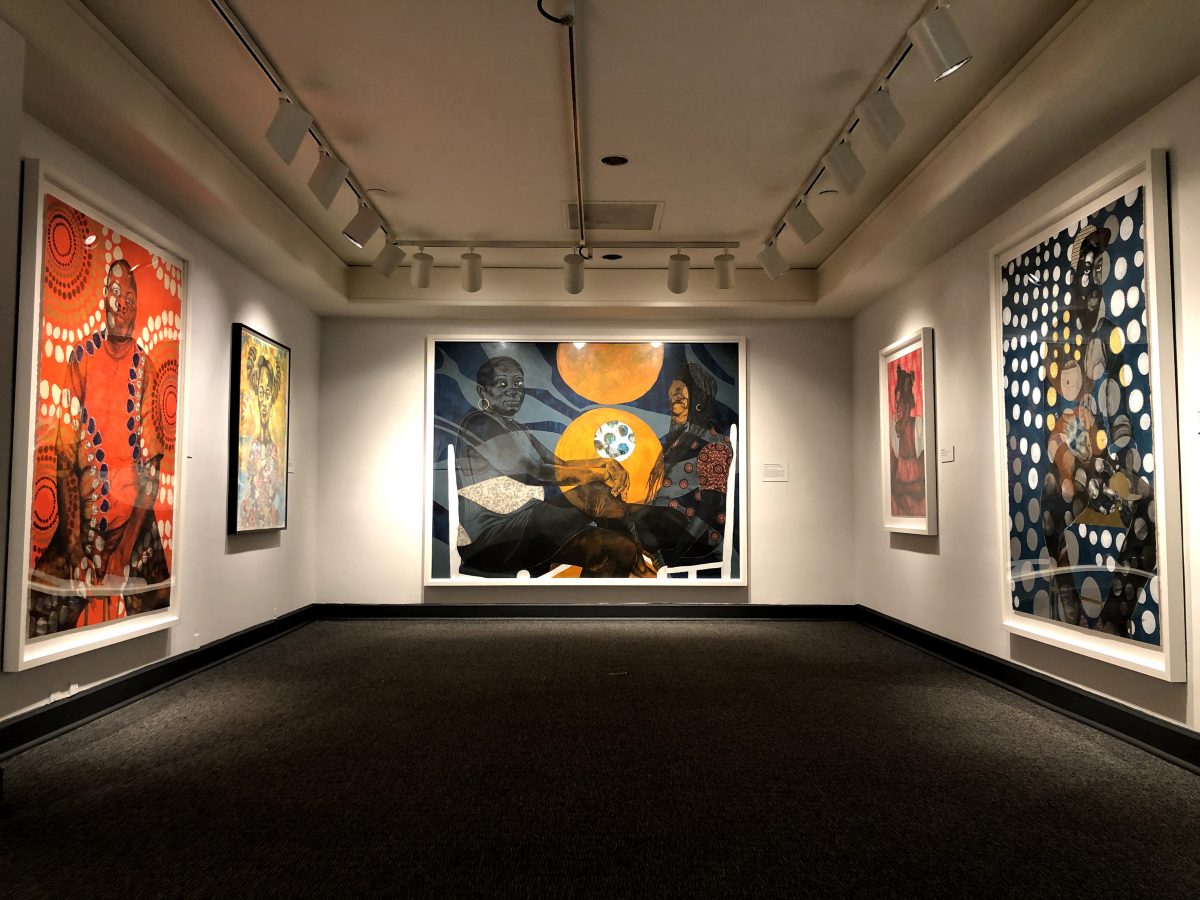And while I look at her subjects, shrouded in color fields of azure, bright green, or carmine, I think of how faith in oneself and the unseen have held the literal fabric of Black life in America. In Martin’s statement, she alludes to the importance of spirituality in Black America, while also hinting at the troubled history that phrase contains. This otherworldly awareness of nameless ancestors that have fueled the ongoing story and existence of African Americans makes the title of her show, Calling Down The Spirits, particularly apt. While the nameless before us are not assigned a particular identity, they are a totemic part of the daily life of African Americans.
Some may argue that religion was a useful tool of control that justified the existence of slavery—a valid critique that may have lead Martin to espouse “veilstate” in terms of spirituality being a blanket of grace and favor, instead of blessings bestowed onto the sitter by whatever entity or higher power that may alienate her potential audience. Religiosity, however, is still strong in the Black community. According to Pew Forum, 87 percent of African Americans identified with one spiritual practice in 2009, compared to just 56 percent for the general population. A possible reason for this could be due to what we have endured in this country. It reveals the strength of the ancestors that have gone beyond the veil—how they made life bearable, and overcame so much, through relying on each other and the community-building efforts of religious and spiritual leaders that preached the love and grace of an invisible God. In the antebellum period, most of the slave rebellions with any measure of success were led by literate ministers, and such religious leaders were seen by white society as threats to established social order; both ministers and their congregations regularly faced harassment and reprisals from the authorities.
However, such spiritual and social connections continued through the nonviolent action of the Civil Rights movement and still endure today. For many African Americans who may no longer follow any particular faith, spirituality becomes less about dogma and more of a way to link community, activism, and a dedicated social outlet together.
In Martin’s works, God is abstract, remade into a positive force that makes its presence felt in the spirituality of Martin’s subject matter and possibly behind that of her “veilstate”—where passing from reality to art, friends and family become composite subjects that are perfect in their lines, shapes, anatomical expression, and the work’s overall aesthetic. Belief becomes faith that yields great works of art, presenting peaceful faces as clean slates, and icons of mercy that incite the viewer to a contemplative state of gratitude, a revelation into a new sort of beauty. With each piece in the show, I feel and see the strength of spiritual ancestors pushing the conversation about beauty and race forward and up into daily consciousness, and I stand grateful.
**********
Calling Down The Spirits is on view at the National Museum of Women in the Arts through April 19. There will be two artist talks on February 21, at noon and at 2:30 p.m.










